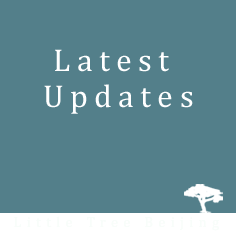For five days in May, 2012, Mrs. Setsuko Ikeuchi, Li Xueqing and I searched out sites in Liaoning Province where Ikeuchi-san’s father, Mr. Takuichi Takeshima, a scholar of Liao architecture had photographed places in the 1930s. We took many of his black and white photos of 1932, 1933 and 1935 and compared them with what we found at various pagodas, temples, and other sacred sites. We then took photos of the sites today in a casual attempt at “rephotography”. Their group traveled around by train, car or horse. In fact, many of the sites they visited are still considered off the beaten track. It was a challenge to find some spots and it took us much longer than anticipated.
Of all the places we visited to trace their fieldwork, one was actually not even mentioned in his travelogue. Among the grainy photos were a couple showing some of them on a boat. Such a large inland body of water seemed implausible, but Ginny had the answer. It must have been a trip to the island of Juhuadao, not far from Xingcheng town where other photos in the set could be identified. So we, too, took a boat for an hour on the waters of Liaoning Bay to reach Juhuadao (Chrysanthemum Isle). When we got there we were able to do “rephotography” at three places. One in particular was our foray into the living quarters of a Chinese Naval Base to discover the same stele that had been photographed some 79 years earlier.
Fortunately, the sailors were quite interested in the old pictures so we had no problem with using our cameras. (see photos 1a, 1b below) Although there is a newly built Guanyige Temple just down the hill, we could confirm that the original Liao dynasty temple site was that place with the stele.
The Gold Pagoda near Haicheng was much more difficult to find. We finally had to ask a local villager to be our guide. He and a monk helped us climb a hill to reach the foot of the pagoda. To our surprise the carvings on the façade were in very good condition so we could easily compare them to Takeshima’s photos (see 2a, 2b).
At Beizhen we visited the newly restored Shuangta: a pair of Liao pagodas (3a, 3b), at the Beizhenmiao Shrine we found some of the lions he had seen (4a, 4b) and we climbed the sacred mountain Yiwulushan (5a, 5b) that the earlier research group had also done.
From his writings we know that Takeshima did extensive research at the Fengguosi Temple in Yixian in both 1932 and 1933. We showed the resident monks and staff from the cultural relics office the photos. We could see how they had made several mistakes in their restorations. One obvious one was the putting of a cane in the hand of a guardian figure instead of the sword he had originally held. (6a, 6b).
We also went around to numerous pagodas of the Chaoyang area. After snaking around country roads we eventually reached the village of Wujiazi to find the rarely visited Dongpingfangta Pagoda. Unfortunately for us, it was in the midst of restoration and had a giant net over the entire pagoda. Thus we simply posed in front of it as the earlier team had done and gazed out at the rolling countryside and river below. (7a,7b,7c,7d)
I think that this kind of “rephotography” is an interesting addition to the study of historical geography, especially now that so many places are getting “restored”. I am hoping to continue doing “rephotography” in my future study trips to China as it gives an extra layer to the understanding of Liao and Jin sites.

















